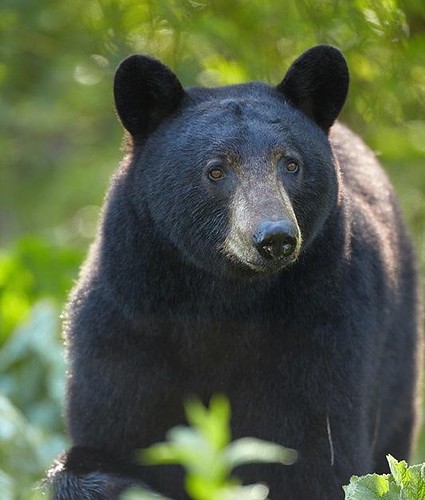Current Context:
The High Court asked the state government to gather perspectives to come up with a comprehensive policy on human-animal conflicts, especially in cases where wild animals invade human habitats, causing casualties.
About current context:
- A wild elephant known as Palakkad Tusker-7 (PT 7) that has been frightening many communities in the Palakkad area for the last two years has been captured by Kerala Forest officers.
Statistics:
- Elephant: India is home to most wild Asian elephants, with 29,964 individuals recorded in the 2017 Project Elephant census, or almost 60% of the species’ total worldwide population.
- Conflict between humans and elephants claimed the lives of 359 people and 87 elephants in 2020–21 (up to December 2020).
- Asiatic Lions: According to the 2020 reports, India is home to an estimated 674 Asiatic Lions.
- Bears, wolves, Asian leopards, jaguars, and spectacled bears are among the creatures that frequently clash with people.
- Tigers: 2,967 tigers are in India, according to the results of the most recent Tiger Census, which was carried out in 2018–19. Tiger’s population is growing at a pace of 6% annually. Eighty percent of the world’s tigers are found in India.
What is human animal conflict?
- Animal-human conflict occurs when wild animals’ natural habitats clash with human activities, such as settlements or agriculture, causing a confrontation between the two.
Reason of human animal conflict:
Human factors:
- Habitat Loss and Encroachment: As human populations grow, we often expand our settlements and agricultural lands, encroaching on animal habitats. This disrupts their natural food sources, breeding grounds, and migration routes, leading them to seek resources in human-dominated areas.
- Resource Competition: Humans and animals compete for the same resources, like water, food, and space. This can lead to conflicts, especially when resources are scarce. For example, farmers might see wild animals as pests damaging their crops, while predators might view livestock as prey.
- Lack of Awareness and Understanding: Sometimes, negative perceptions or fear of animals can lead to conflict. People might not understand animal behavior, leading to accidental interactions that escalate into conflict.
- Poaching and Illegal Wildlife Trade: The illegal killing and capture of animals for their body parts or trade can disrupt animal populations and increase competition for resources, leading to conflict with humans.
Animal factors:
- Adaptation to Changing Environments: Animals might adapt to human-altered landscapes, seeking food or shelter in human settlements. This can lead to increased interactions and potential conflict.
- Population Fluctuations: Changes in animal populations, either natural or human-induced, can impact their resource needs and behaviour, increasing the likelihood of conflict with humans.
- Species-Specific Behaviour: Some animals are naturally more territorial or opportunistic, which can increase their chances of encountering and potentially conflicting with humans.
Impact of human animal conflict :
Impacts on Humans:
- Economic Losses: Crop damage, livestock predation, property damage, and even tourism disruptions can lead to significant financial losses for communities living alongside wildlife.
- Food Security: Reduced crop yields and livestock availability can contribute to food insecurity and malnutrition, especially in vulnerable communities.
- Physical and Psychological Harm: Injuries and even fatalities from animal attacks can have severe physical and psychological consequences for individuals and families.
- Social Conflict: Competition for resources and negative perceptions of animals can create social tensions and conflicts within communities.
- Undermined Conservation Efforts: Negative experiences with wildlife can erode public support for conservation efforts, hindering the protection of biodiversity.
Impacts on Animals:
- Habitat Loss and Degradation: Human encroachment and resource conflict can lead to habitat loss and degradation, impacting animal populations and ecosystem health.
- Increased Mortality: Retaliatory killings, accidental deaths due to infrastructure or vehicles, and poaching can significantly impact animal populations, pushing some species closer to extinction.
- Stress and Displacement: Disruption of natural resources and movement patterns can cause stress and displacement for animals, affecting their health and reproductive success.
- Genetic Mixing and Disease Transmission: Increased interactions with humans can lead to genetic mixing and disease transmission between humans and animals, posing threats to both species.
What steps are being taken to tackle the conflict by the government?
- Wildlife Protection Act 1972: It establishes the laws and regulations for the conservation and preservation of animals in India.
- Protected Areas and reserves: There are 106 national parks, 567 wildlife sanctuaries, and 105 existing conservation reserves.
- Monitoring the Illegal Killing of Elephants: It was formed by the Convention on International Trade in Endangered Species of Wild Fauna and Flora (CITES) during the tenth Conference of the Parties in 1997.
- Provide insurance: Use add-on coverage under the Pradhan Mantri Fasal Bima Yojna to compensate for agricultural loss caused by HWC.
Way forward :
The route to minimizing human animal conflict is lengthy and difficult. It requires concerted efforts from a variety of stakeholders, including government agencies, conservation organizations, researchers, and local populations. By bridging the gap between human demands and animal care, we may create a future in which humans and animals coexist together.

